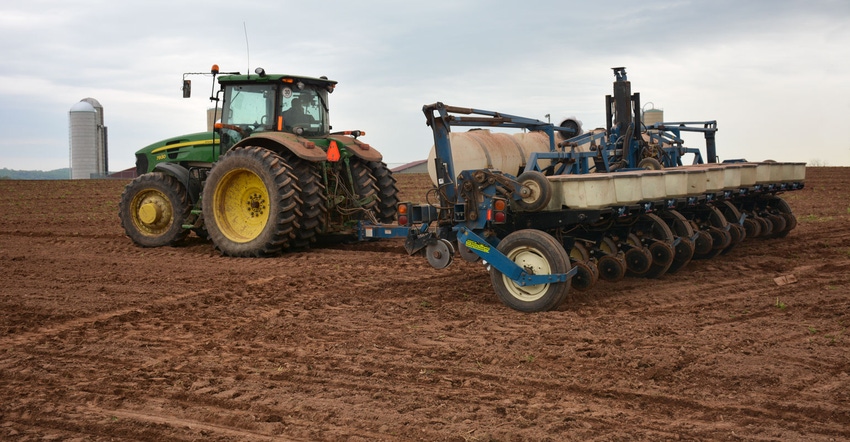
The remnants of 2018 are still being seen on area farms, especially in winter wheat.
“Winter grains and cover crops are quite uneven this year,” says Jeff Graybill, Extension educator in Lancaster County. Blame the saturated soils for allowing diseases and molds to affect stands, he says, especially in low-lying areas.
“If the field was top-dressed, that will have helped it to fill in, but many of the larger areas, while less visible, will result in slightly depressed yields even if the remainder of the field performs well,” Graybill says.
Charles Schuster, Extension educator in western Maryland, says wheat stands are improving as the weather gets dryer and warmer.
“In areas where water did not stand or puddle for long periods the wheat is growing and looks excellent. In areas where water puddled for extended periods of time there are sections of fields that it drowned out or is not looking as good,” Schuster says.
Overall, 35% of Pennsylvania’s winter wheat is rated “fair” while 58% is “good,” according to the most recent NASS Crop Progress Report. Apples are 39% pink, well-ahead of the five-year average, and peaches are 61% pink, also ahead of the five-year average. The warm weather has led to 43% of the peach crop to come into bloom.
Maryland’s wheat crop is 71% “fair” and 21% “good.” Most of the state’s apples and peaches are blooming, and farmers are even starting to plant some corn.
“Corn planting has started with everything from 5% to 60% planted on farms,” Schuster wrote in the Crop Progress Report. “Most are in the 25% range. Soils continue to dry as the winds have remained steady many days.”
In Delaware, 52% of winter wheat is “fair” while 39% is “good.” Apples and peaches are also coming into bloom.
“Peas should be planted by now. Some corn planted; seeing the planted rows in fields,” reporter Harry T. Hudson III wrote in the Crop Progress Report.
Apples and peaches have come into green tip on many orchards in New Jersey. Winter wheat is rated 35% “fair” and 50% “good.”
Debra Crisman, a crops reporter in Warren County, N.J., says farmers have started spreading fertilizer and tilling ground as planting season approaches.
Farmers are busy working ground in southern New York in preparation for seeding.
“Alfalfa on the gravel soil noticeably broke dormancy on April 17,” wrote Janice Degni, a crops reporter in southern New York.
“Temperatures during the week were somewhat warm and immediately after a rain on April 18, everything greened up. Lawns went from dull to bright green," Degni wrote. "Hay fields were noticeably green and early trees and shrubs, like willow and shad, were budding out. Hay seeding and oat planting continues. Manure applications and tillage on dryer ground continues. Early sweet corn as well as some field corn was planted by the most courageous with thousands of acres yet to plant. Top-dress for hay field was well underway. Field work continues between showers when necessary and possible.”
Northern parts of the state, though, are still cold and wet.
“Very little progress has been made due to the cooler temperatures and moisture,” wrote Ellen deMey of Oswego County. “The ground is still very wet and field work has yet to begin.”
Last-minute preparations
Most farmers should be done with planter maintenance, so it’s all about making last adjustments in the field, according to Graybill.
“Make sure your monitor is working,” he says. “Is the planter level? Are all of the units working properly? As you make the first round in the field, stop a couple of times and check seed depth, uniformity of planting.”
Schuster says to remember farm safety, especially on the roads.
“No taking shortcuts, taking chances,” he says. “Road travel is a concern all the time, and with our machinery being wider and longer, producers need to take time to consider the best way to move down our roads.”
About the Author(s)
You May Also Like






